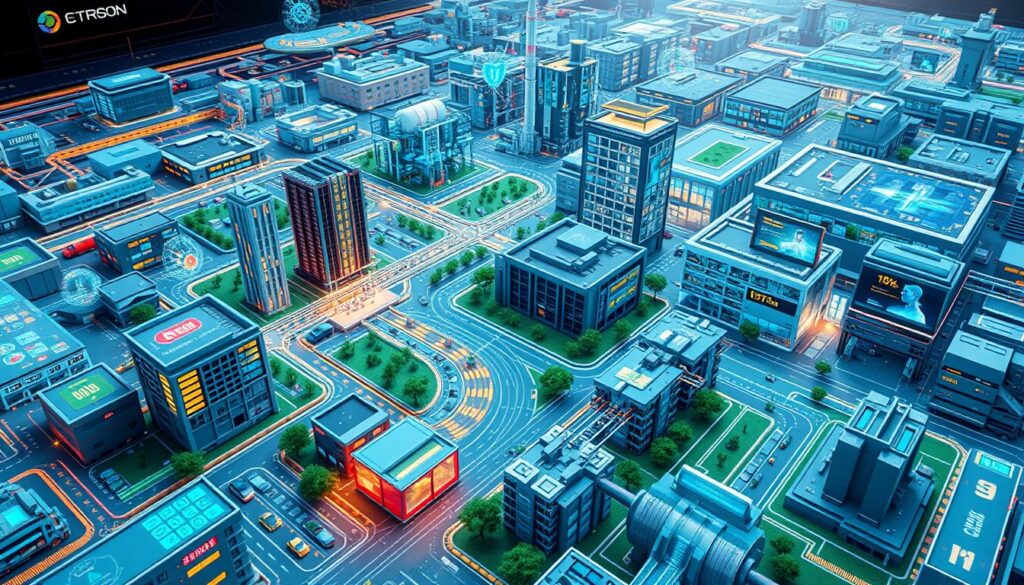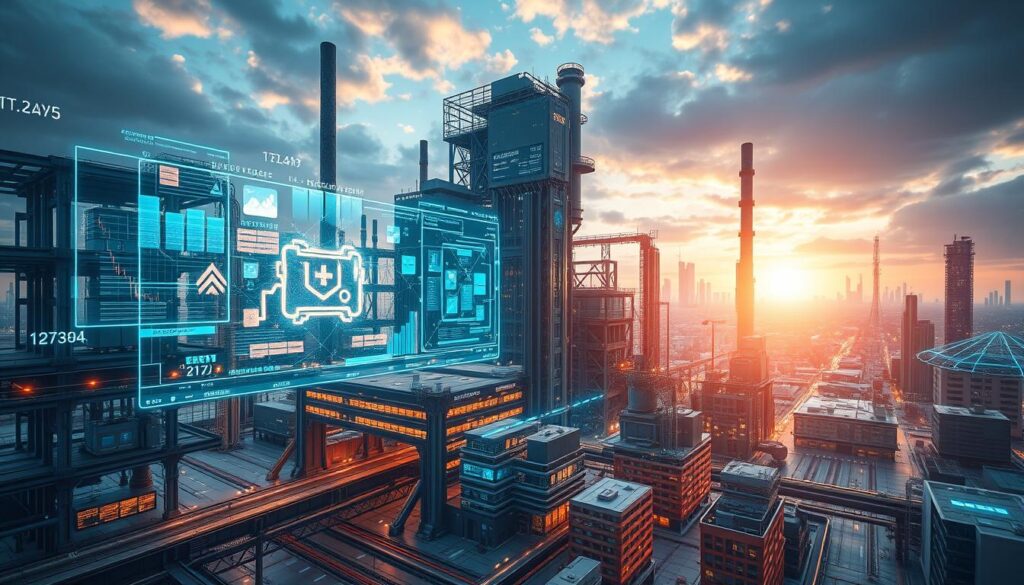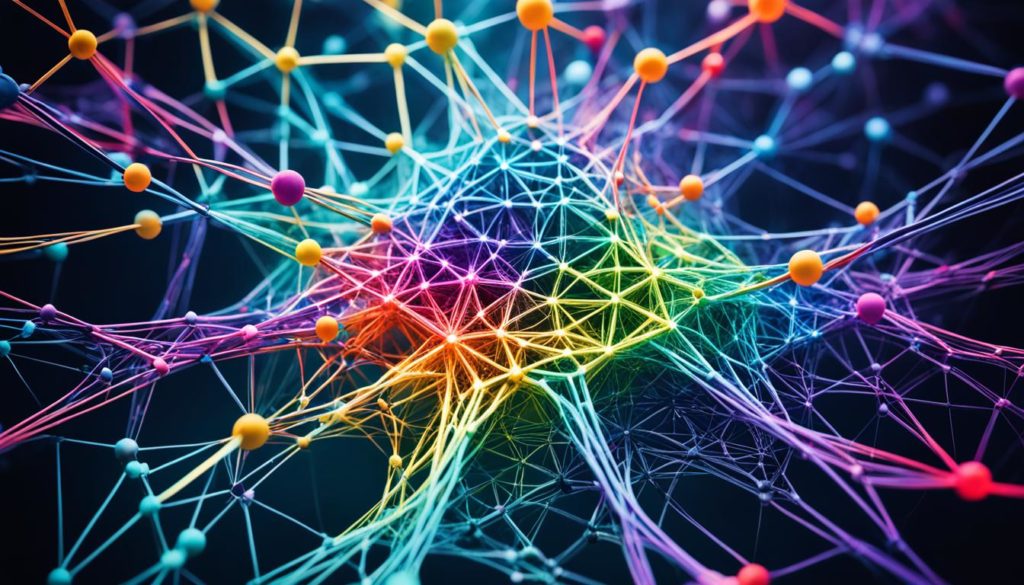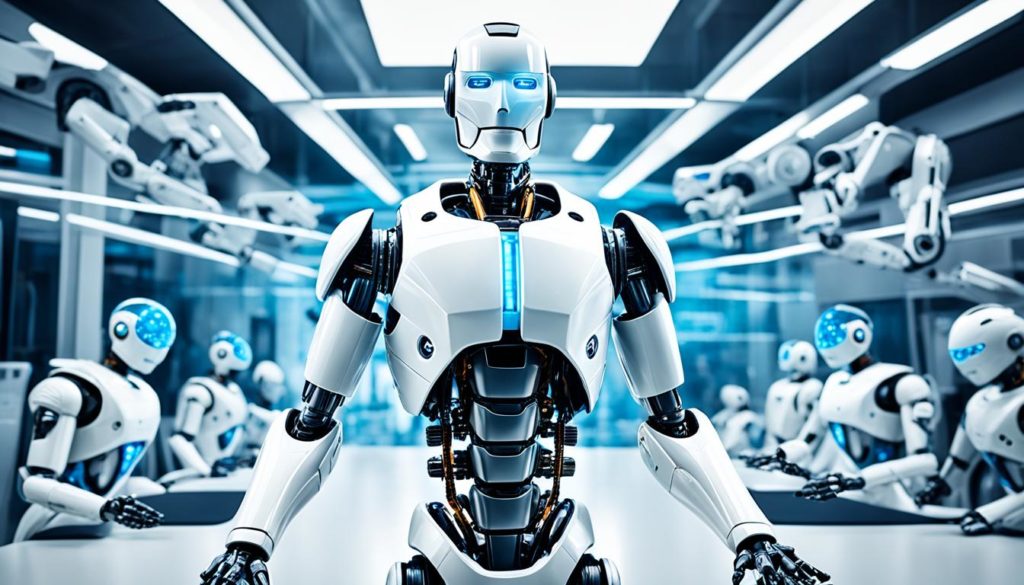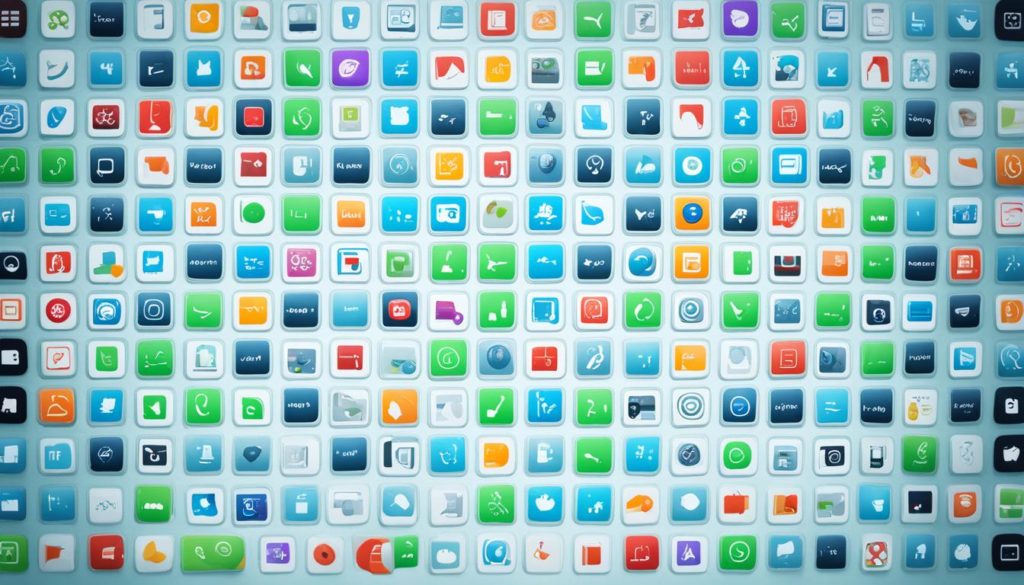
Did you know the global digital twins market is set to hit $73.5 billion by 2027? This huge growth shows how digital twins technology is changing the game. It uses IoT devices to create detailed models of real things, giving us new insights and ways to work better.
We’ll look into how digital twins make things run smoother, help make new products, and make customers happier. With tools like Microsoft’s Azure Digital Twins, companies can mimic environments like buildings and cities. They use data from IoT devices and business systems to track performance and fix problems.
What makes digital twins special is how they keep getting better. They start simple and grow to predict and even act on their own. This growth means users get more accurate data and better insights, helping companies save money and work smarter.
In this article, we’ll dive into digital twin software and its uses. We’ll see how it’s changing fields like smart manufacturing and infrastructure management. Join us as we explore the exciting world of digital twins and how they can help your business.
Key Takeaways
- The digital twins market is expected to reach $73.5 billion by 2027.
- Digital twins utilize real-time data from IoT-connected devices.
- Platforms like Microsoft’s Azure Digital Twins enhance product development and operations.
- Digital twins offer evolving stages of maturity, providing increasing value.
- Real-world applications include smart manufacturing and infrastructure management.
Ready to learn more? Check out the impact of digital twins technology on different industries. See how this new approach can make your operations better.
What Are Digital Twins?
Digital twins are virtual copies of real objects. They act as digital replicas in a virtual world. These models include everything about an asset, like how it works and its features.
They update in real-time using data from the real world. This lets us plan, monitor, and make better decisions. The market for digital twins is expected to grow to $73.5 billion by 2027.
Definition and Basics
Digital twins are advanced simulations of physical systems. They let us interact with and analyze real assets in a digital space. They are used in many fields, from design to maintenance.
The Digital Twin Consortium says a digital twin has three parts: a real object, a digital model, and data that connects them. This connection allows for continuous updates and real-time data exchange.
How Do Digital Twins Work?
Digital twins work by linking a virtual model to a real object through sensors and data. AI, IoT, and Cloud computing help them function. For example, a Siemens Energy digital twin of a power plant can predict maintenance needs, saving $1.7 billion a year.
They capture data from sensors, transfer it to the model, and use AI to simulate scenarios. This ensures the digital twin always reflects the current state. It allows for proactive strategies.
Digital twins are not just for individual assets. They can also manage larger systems and processes. Smart cities use them to improve traffic and design, for example.
In healthcare, digital twins can offer personalized treatments and help develop medical devices. They can improve patient care and medical process efficiency. They also help with environmental sustainability by making production more efficient.
Understanding digital twins shows their huge benefits. They are changing many industries as they grow and improve.
The Role of IoT in Digital Twin Technology
At the heart of digital twin tech is the Internet of Things (IoT). It connects billions of devices, sharing data and changing industries. This tech gives businesses real-time insights to improve operations, increase efficiency, and cut downtime.
IoT Integration
IoT is key to digital twins, showing real-world conditions accurately. It’s especially important for smart manufacturing digital twins. It gives a full view of equipment and production.
IoT sensors send data to digital twins constantly. This keeps the system up-to-date and interactive. AI and machine learning make this data even more valuable, offering deeper insights for improvement.
Real-Time Data Collection
Collecting data in real-time is crucial for digital twins. IoT sensors gather detailed data, from small parts to whole systems. This data is used for predictive analytics and various digital twin types.
Real-time data is a game-changer in smart manufacturing. It boosts efficiency and predicts when maintenance is needed. This reduces unexpected stops and makes equipment last longer.
Statistical data shows the digital twin market is growing fast. It’s expected to reach $73.5 billion by 2027. The use of AI, cloud computing, and IoT is driving this growth.
Here’s a look at how IoT is expanding digital twin technology:
| Data Point | Statistics |
|---|---|
| Global Digital Twin Market Growth | 38% CAGR from 2023 to 2030 |
| Projected Market Value | $73.5 billion by 2027 |
| Firms Using Digital Twins | 13% currently, 62% planning |
| CHIPS Manufacturing USA Institute Funding | $285 million |
As we keep improving these systems, IoT’s role in digital twin tech will grow. It will lead to big changes in many sectors.
Key Applications of Digital Twins
Digital twins are making a big splash in many industries. They help businesses work better, save money, and make smarter choices. Let’s look at some areas where digital twins are really changing the game.
Smart Manufacturing
In smart manufacturing, digital twins are changing the game. They help predict when things need fixing and improve how things are made. For example, 63% of makers are working on or have a digital twin plan.
This lets them watch production in real-time and prevent problems. It’s key because it can cut down on prototypes and speed up development.
Product Lifecycle Management
Digital twins are vital in product lifecycle management (PLM). They help from the start to the end of a product’s life. They make getting products to market faster and better.
Companies see 3 to 5% more sales from digital twin products. Also, digital twins have 25% fewer quality issues when they start production. This shows how much digital twins help in PLM.
Infrastructure Management
In infrastructure management, digital twins are a big help. They create detailed models of buildings and big structures. This makes planning and upkeep better.
The market for digital twin tech is growing fast, expected to hit $73.5 billion by 2027. Digital twins also make teamwork and decision-making easier with real-time data and virtual experiences. Companies like Zutari and DPR Construction are already using them.
| Industry | Application | Key Benefits |
|---|---|---|
| Manufacturing | Predictive Maintenance | Reduces downtime, enhances productivity |
| Product Lifecycle | Design and Testing | Decreases time to market, improves quality |
| Infrastructure | Operational Efficiency | Improves planning, operations management |
Digital Twin Benefits
Digital twin technology is changing many industries. It helps in manufacturing and managing infrastructure. This technology makes businesses more efficient and improves how they work.
Operational Efficiency
Digital twin software boosts operational efficiency. It creates virtual models of real assets. This lets us test and analyze without affecting actual operations.
This virtual space helps make better decisions. It optimizes production and cuts down on costs. Companies see a 10% cost reduction and a 20% boost in reliability.
Predictive Maintenance
Digital twins also help with predictive maintenance. They use real-time data to check equipment health. This way, we can plan maintenance and avoid unexpected downtime.
This approach lowers maintenance costs and makes equipment more reliable. In manufacturing, digital twins show benefits in just a few months. They help in product development and customer service, leading to new opportunities and profits.
Using digital twin software improves operations right away. It also supports long-term goals. Companies can produce faster and spend less, making digital twins key for today’s businesses.
FAQ
What is digital twins technology?
Digital twins are virtual copies of real objects that work in real-time. They match the real thing’s behavior and features. This helps in planning, monitoring, and making better decisions.
What are some common digital twin applications?
Digital twins are used in smart manufacturing, managing products, and infrastructure. They make production better, predict when things need fixing, and improve design and operations.
What digital twin software is recommended?
Microsoft Azure Digital Twins is top for creating digital models. It uses IoT and real-time data for better decision-making in product development and operations.
Can you provide some digital twin examples?
For example, simulating factory lines, making digital copies of buildings, and creating virtual product models for testing and improvement.
What are the benefits of digital twin technology?
Benefits include better operations, predictive maintenance, real-time insights, and improved customer service. Companies see big savings and reliability boosts.
How do digital twins work?
Digital twins update their models with real data from IoT sensors. AI and ML analyze this data for insights and improvements.
How does IoT integration enhance digital twin functionality?
IoT feeds real-time data to digital twins. This makes their digital models accurate and interactive.
What is the role of real-time data collection in digital twins?
Real-time data helps digital twins reflect current conditions. This gives valuable insights for monitoring and decision-making.
How does smart manufacturing benefit from digital twins?
Digital twins in smart manufacturing improve production lines, quality, and predict maintenance. This reduces downtime and boosts efficiency.
What is the scope of digital twin applications in infrastructure management?
Digital twins provide detailed views of buildings and infrastructure. They help in better planning, management, and analysis.
How do digital twins contribute to operational efficiency?
Digital twins enable simulated testing and analysis. This leads to better decisions, fewer failures, and better resource use.
What does predictive maintenance with digital twins involve?
Predictive maintenance with digital twins anticipates failures by analyzing data. This reduces downtime and maintenance costs.
Future App Studios is an award-winning software development & outsourcing company. Our team of experts is ready to craft the solution your company needs.


